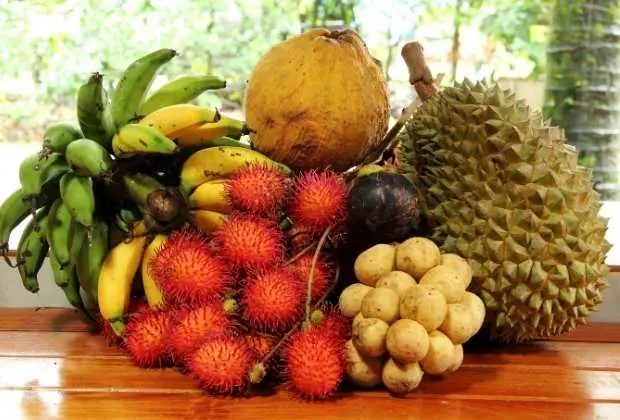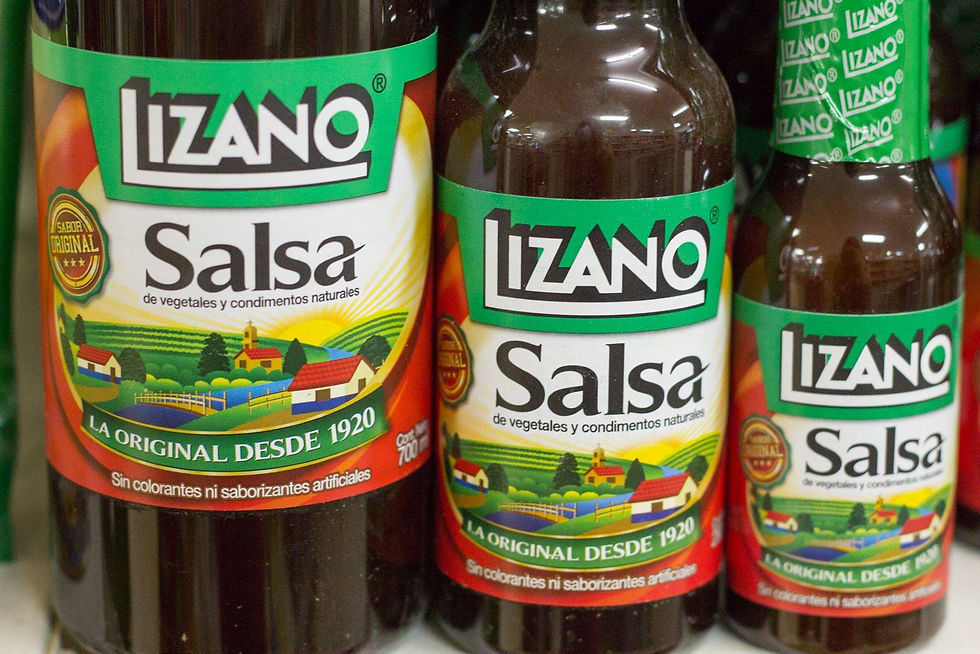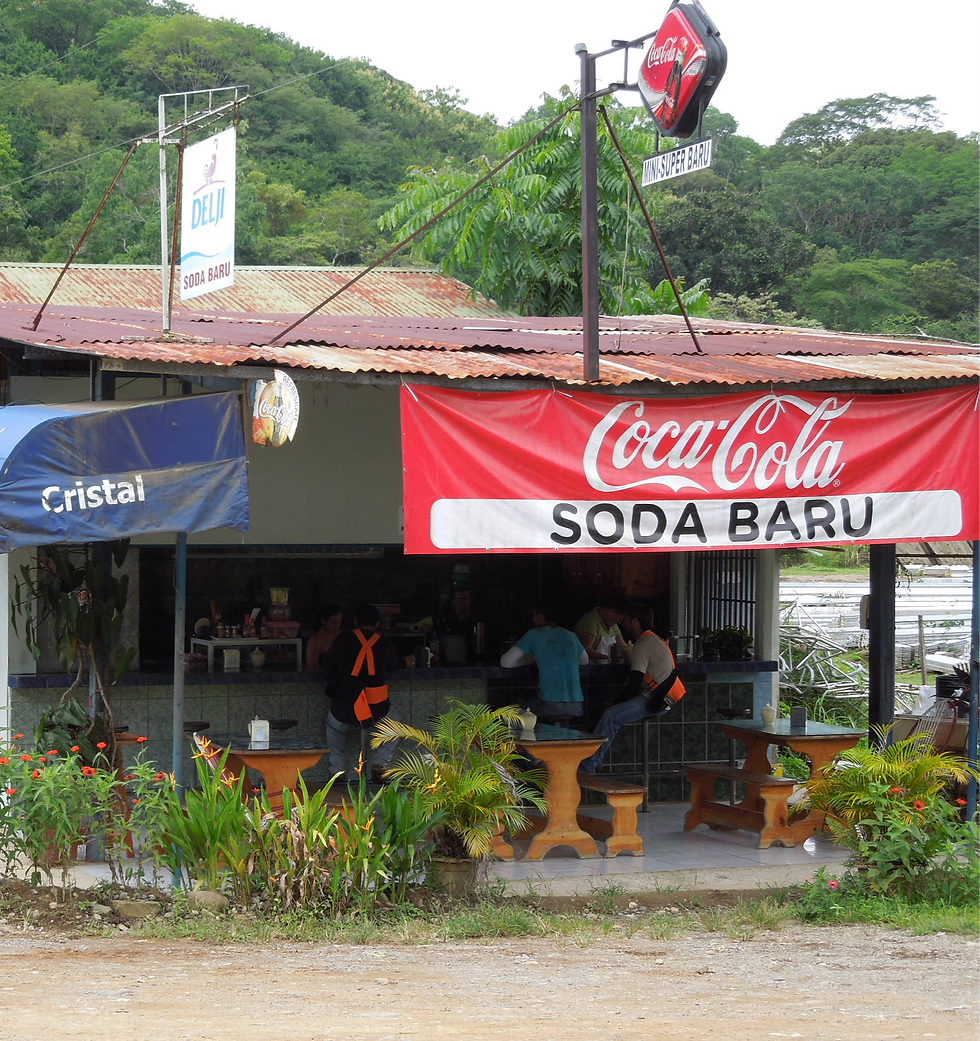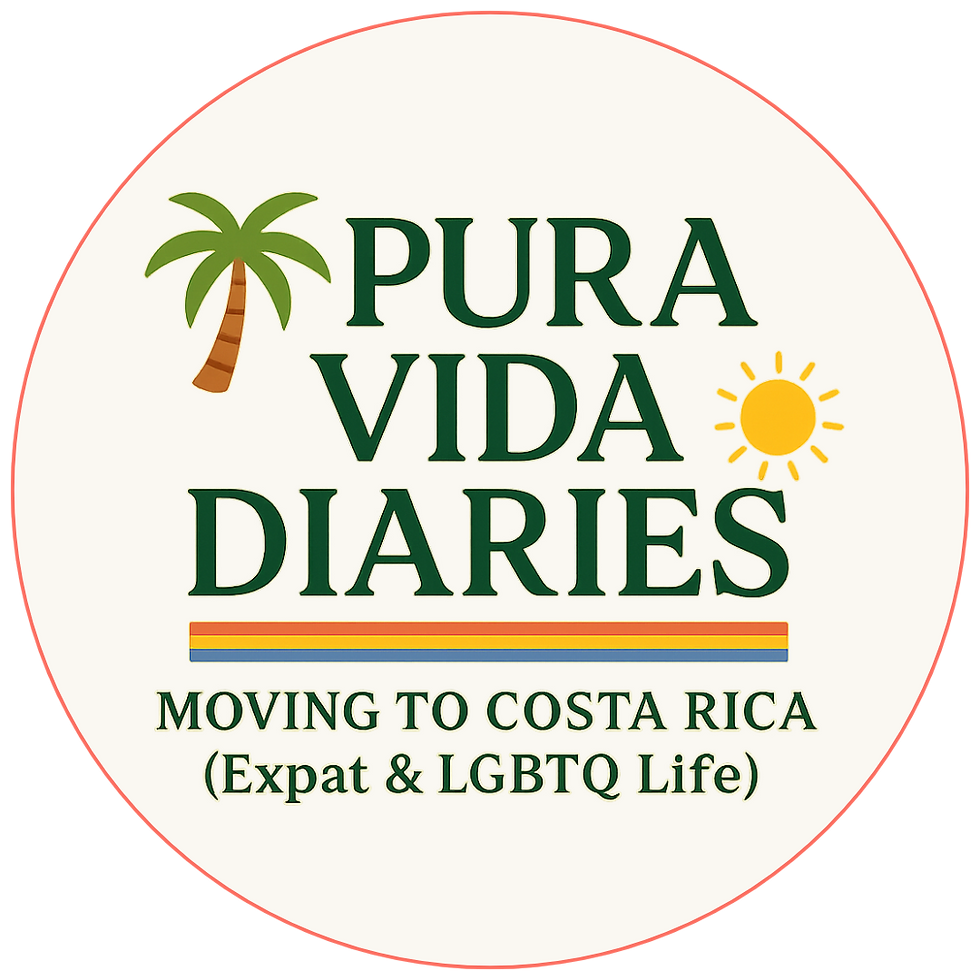🌴 The Pura Vida Diet: Farmers’ Markets, Fresh Food Culture, and What to Skip at the Grocery Store in Costa Rica
- Waymon Hudson

- Sep 24, 2025
- 5 min read
Updated: Nov 6, 2025

If you think “Pura Vida” is just hammocks and sunsets, you’re missing the most delicious part: the food. In Costa Rica, your plate is stacked with fruit so fresh it makes U.S. “organic” aisles look like a crime scene. But before you start Instagramming every papaya, let’s break down Costa Rica food culture — where to shop, what to savor, and what not to waste money on.
1. The Farmers’ Market (Feria) Is Your Church Now

The feria is a weekly ritual, not a chore. It’s where you shop, gossip, and taste why Costa Rica consistently ranks as one of the happiest countries in the world. It's also an amazing way to shop local and support your community.
What you’ll find:
Mangoes: mountains of them, for less than your old Starbucks latte.
Avocados: bigger than your hand, buttery perfection.
Plantains: green, yellow, or blackened — they’re not “specialty,” they’re dinner.
Coffee beans: fresh-roasted, shade-grown, and addictive.
💡 Pro tip: Go early for the best produce, late for discounts. Many are cash only.
2. Grocery Stores: Friend, Foe, or Financial Trap?

Yes, you’ll still need supermarkets. Just know how to play the game:
Local staples: rice, beans, dairy, eggs, fresh tortillas = cheap and excellent.
Imports: brand-name cereals, fancy cheeses, spices = 2–3x U.S. prices.
The Gringo Tax: $8 Jif peanut butter is your punishment for not switching.
💡 Survival strategy: Fall in love with local brands. Your wallet (and cholesterol) will thank you.
3. The Pura Vida Pantry Staples

Every Costa Rican kitchen has these:
Lizano sauce (sweet + tangy magic)
Warm fresh tortillas
Local honey
Bright, citrusy cilantro
Gallos (tortilla + beans + cheese) — cheap, fast, satisfying
4. Eating Out Without Guilt (or Bankruptcy)

Sodas: neighborhood diners where $4–$6 gets you rice, beans, salad, plantains, and protein. Pure comfort. Try a Casado with your choice of protein- they are DELICIOUS and filling!
Upscale: $20–$30 per person in beach towns and San José. Can be higher, so always check the menu ahead of time.
Queer foodie alert: San José has a growing LGBTQ+ dining scene — brunches, pop-ups, craft beer bars. Check Facebook groups for the latest.
Eating local is another great wauy to make sure you're giving back to the community that is welcoming you. You get great food, meet more Ticos, and give back. It's a win-win all the way around!

5. Coffee: The Real National Treasure
Costa Rica doesn’t just grow coffee; it worships it.
Always choose local roasters over supermarket chains.
Instant? Only in emergencies (or post-surf haze).
Three cups a day? Doctor-approved here.
Quick Takeaway

Eating in Costa Rica is joyful when you embrace the local way. Shop the feria, eat at sodas, stock Lizano and tortillas, and splurge on coffee. Avoid the import aisles unless you really need U.S. peanut butter. Your fridge will sparkle, your wallet will breathe, and your meals will finally taste like “Pura Vida.”
Also check out the rest of the Pura Vida Diaries Blog Series:
Part 1: Moving to Costa Rica: Why I Chose Here Out of Anywhere in the World
Part 2: Thinking of Moving to Costa Rica? Cost of Living, Rent & Reality Check
Part 3: Residency in Costa Rica: How to Stay Legally (Without the Border-Run Headache)
Part 4: How to Be a Good Immigrant in Costa Rica (a.k.a. Don’t Be “That” Expat)
Part 6: Pets in Paradise: Bringing Your Dog or Cat to Costa Rica — and Why You Might Adopt One Here
Part 7: Culture Shock in Costa Rica: Why It’s the Best Thing That Ever Happened to Me (Pura Vida, Baby)
Part 9: Learning Spanish in Costa Rica: A Fun (and Honest) Guide for Expats Who Aren’t 22 Anymore
Part 10: Remote Work in Costa Rica: Jungle Wi-Fi, Time Zones, and the Digital Nomad Life
Part 11: Costa Rica Expat Challenges: The Hard Stuff No One Posts on Instagram
Basically? If you’ve ever Googled “Can I really move to Costa Rica?” …this series is your sign.
FAQ: Costa Rica Food Culture
Is food cheap in Costa Rica?
Local staples like rice, beans, tortillas, eggs, and produce are affordable, especially at farmers’ markets. Imported items like peanut butter, wine, and brand-name snacks can be 2–3x U.S. prices.
What are Costa Rican farmers’ markets like?
Weekly ferias offer fresh produce, local cheese, honey, herbs, and coffee at unbeatable prices. They’re a cultural tradition and the best way to shop like a local.
How much does it cost to eat out in Costa Rica?
At a local soda, meals run $4–$6. Upscale restaurants in tourist towns or San José average $20–$30 per person.
What foods are unique to Costa Rica?
Gallo pinto (rice + beans), plantains, Lizano sauce, fresh tortillas, and locally roasted coffee are staples of Costa Rica food culture.
Is Costa Rican food healthy?
Yes. The diet is heavy on beans, rice, vegetables, fruit, and fish — fresh, affordable, and nutrient-dense compared to processed U.S. diets.
💡 P.S. — this is just the beginning.
Every Wednesday I’ll be dropping a new article in my Pura Vida Diaries series. Think of it as your jungle survival (and thrival) guide.
We’re going to cover it all:
🛂 Residency + visas (aka: how not to get deported)
💸 Living expenses + budgets (yes, you can afford it — even with your avocado toast addiction)
🏥 Healthcare (Caja vs. private, and what it’s really like)
💻 Remote work realities (including jungle Wi-Fi myths)
🥑 Food, culture, & community (the farmers’ market, the friends, the pura vida)
🐕 Pets & rescues (because jungle dogs deserve love too)
🌍 How to Be a Good Immigrant (gentrification, humility, supporting locals — aka don’t be “that” expat)
Basically? If you’ve ever Googled “Can I really move to Costa Rica?” …this series is your sign.
📲 Follow Me
Want more than just the weekly blog drop? Let’s hang out everywhere:
🎥 YouTube → deep-dive videos of each blog (perfect for bingeing with coffee)
📸 Instagram → my daily life here (sunrises, dogs, jungle sweat, and a few shirtless selfies)
🎬 TikTok → the fun, fast, and slightly thirsty version of this expat adventure
👥 Facebook → where community + conversation actually happen
📰 Substack → longer reflections, essays, and behind-the-scenes of this wild queer jungle life
👉 Come along — because this isn’t just me telling you my story, it’s an invite to imagine what yours could look like too.









Comments